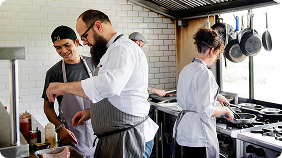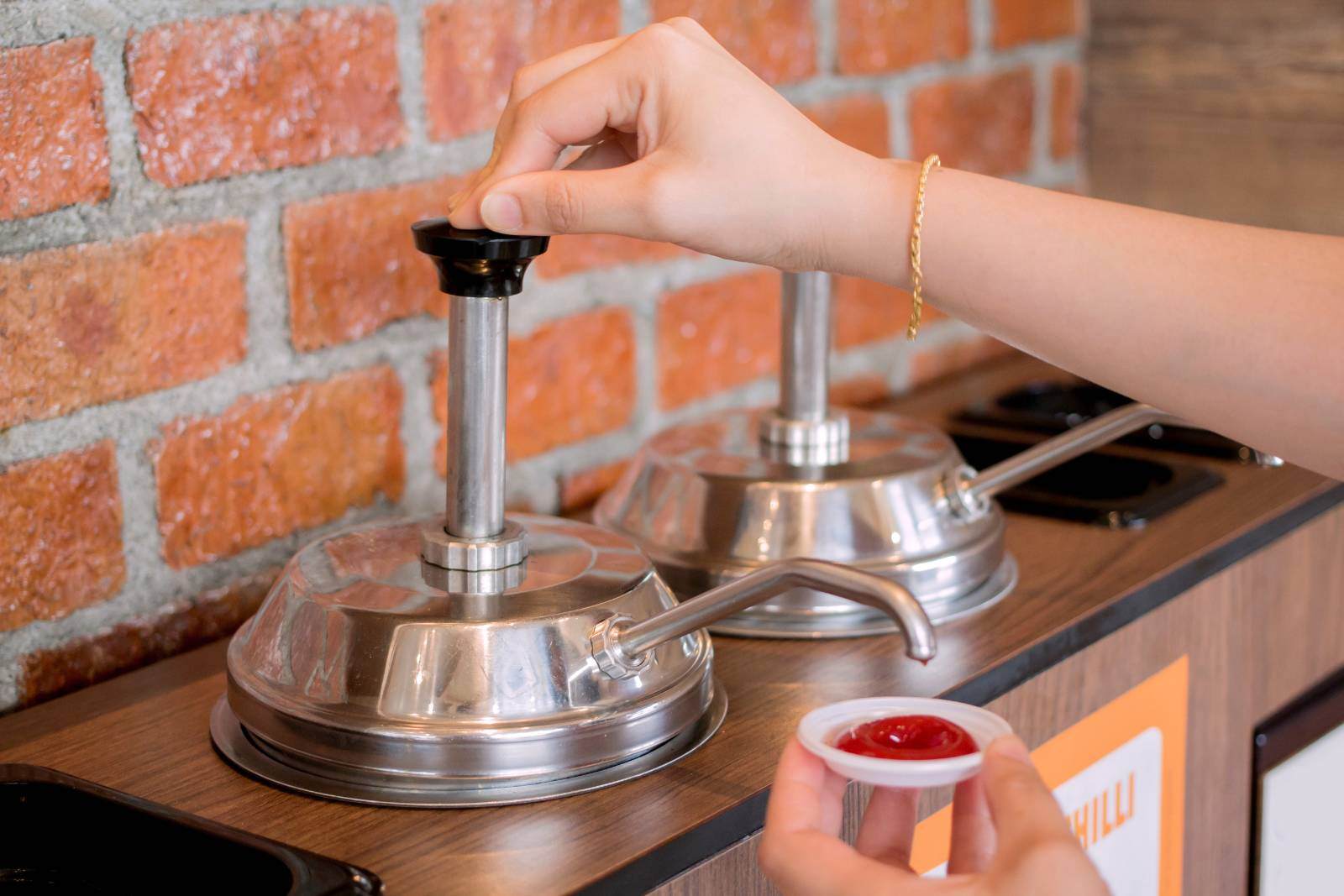The best dining experiences account for every detail, including the presentation of condiments.
Fine dining establishments might put house-made ketchup in an elegant serving dish, while stadiums and fast-food restaurants offer simple self-serve stations.
However, the aesthetics don’t matter unless you also follow food safety best practices when handling condiments. Read on to learn about the essentials of condiment food safety.
In this post, we’ll cover:
Why is food safety for condiments so important?
What guidelines should you follow for condiment food safety?
What condiments can be left out?
How long can you keep condiments in the refrigerator?
When should you throw condiments in the garbage?
Why is food safety for condiments so important?
In the United States, the Centers for Disease Control (CDC) estimates that about 48 million Americans get sick from a foodborne illness every single year.1
Foodborne illnesses are dangerous. They can result in sickness and death, not to mention the permanent closure of your business. Even minor cases can impact your community, reputation, and bottom line.
Like all other foods in your establishment, condiments require strict adherence to food safety best practices. Perhaps even more so because, by their very nature, many people handle them.
What guidelines should you follow for condiment food safety?
If you work in a foodservice setting, you already know the importance of food safety. However, you may not have thought about it in the context of condiments.
The same general food safety rules apply: receive and store these foods properly, avoid cross-contamination, keep (TCS) foods out of the temperature danger zone, and follow hand hygiene best practices.
However, some common condiment locations require some more specific considerations.
Dining tables
The best dining experiences stem from an attention to detail, all the way down to how condiments are served.
In casual atmospheres, you may bring condiments to your customers in baskets or have them permanently stationed at each table. In high-end establishments, you might serve condiments with each dish.
However your establishment handles them, any utensil, container, or dish you use to serve condiments must be cleaned, sanitized, and restocked regularly.
Back of house
Condiments should always be stored properly (generally in a refrigerator) before they go out to customers, even if they’re prepped long before service.
Using the FIFO method will also help promote food safety by ensuring you use prepared condiments before they lose their freshness or become unsafe.
Buffets
We tend to pay special attention to the temperature controls of meats and other entrees on the buffet line, but you should always consider the condiments, too.
Regular temperature checks are important to keeping buffet foods safe, so it should be easy to ensure you are checking the temperature of condiments containing TCS foods.
Buffet organization will also play a role in keeping condiments safe. To prevent time-temperature abuse, avoid placing condiments near heating lamps. You may also want to separate condiments from other dishes to reduce the risk of cross-contamination and cross-contact.
Of course, you and your team need to observe proper hygiene practices and wear gloves and hair nets when adding fresh food (that includes condiments!) to the buffet.
While you have less control over your customers’ hygiene, you can use signage to encourage them to wash their hands and use the proper utensils when serving themselves. You can also make sanitizing stations readily available near the buffet.
Condiment stations
Establishments such as fast-casual restaurants, stadiums, food trucks, and cafeterias may find it easier to provide condiment stations instead of putting them on tables or bringing them directly out to customers.
As with buffets, the risk of contamination in condiment stations goes up whenever customers have the chance to serve themselves. Frequently checking and cleaning condiment stations will help minimize food safety risks.
If you work in a high-volume establishment, single-use condiment packages may be the safest option for your customers.
What condiments can be left out?
Certain condiments, such as vinegar-based ones like ketchup, mustard, and hot sauce, can typically be left out at room temperature due to their acidic nature, which acts as a natural preservative.
However, you should always refrigerate mayonnaise, dairy-based dressings, and homemade sauces containing perishable ingredients to prevent the growth of pathogens.
Should I put unopened condiments in the cooler?
While many condiments are shelf-stable until opened, storing unopened condiments in the refrigerator can help maintain their quality and extend their shelf life.
Refrigeration can slow down the degradation process of ingredients, especially for items like salad dressings and specialty sauces that may contain sensitive components.
How long can you keep condiments in the refrigerator?
The U.S. Department of Agriculture lists some specific recommendations for how long certain condiments will stay safe when in a refrigerator.2
These recommendations include:
Ketchup, cocktail, or chili sauce: Six months.
Chutney: One to two months.
Horseradish: Three to four months.
Mustard: 12 months.
Mayonnaise: Two months (if the expiration date has not passed).
When should you throw condiments in the garbage?
You should discard condiments if they exhibit any signs of spoilage, including mold growth, unusual odors, separation of ingredients, or discoloration. Watch out for sour or fishy smells or a slimy texture.
Expiration dates on condiment packaging are guidelines for optimal quality and flavor. However, you should always err on the side of caution and toss condiments in the garbage once they expire.
Also, if a condiment has been stored improperly, exposed to heat, or cross-contaminated, it's best to dispose of it as soon as possible.
Spread sauces, not bacteria
When it comes right down to it, the principles of condiment food safety are no different than any other type of food safety.
If you understand safe food handling and storage, incorporating additional safety measures around condiments should be simple. After all, you want to serve delicious food–not bacteria and other pathogens!
Whether you’re spreading aioli on a crispy baguette or squeezing a healthy dollop of ketchup onto a cheeseburger, the key takeaway is this: to keep your customers safe from foodborne illness, you need to pay attention to every detail, from the main course down to the mayonnaise.
Not sure you’re up-to-date on your food safety knowledge? Trust20’s Food Handler Certificate Training can get you back on track.
Sources
-
Centers for Disease Control and Prevention: Estimates of Foodborne Illness in the United States






.png)

.png)
